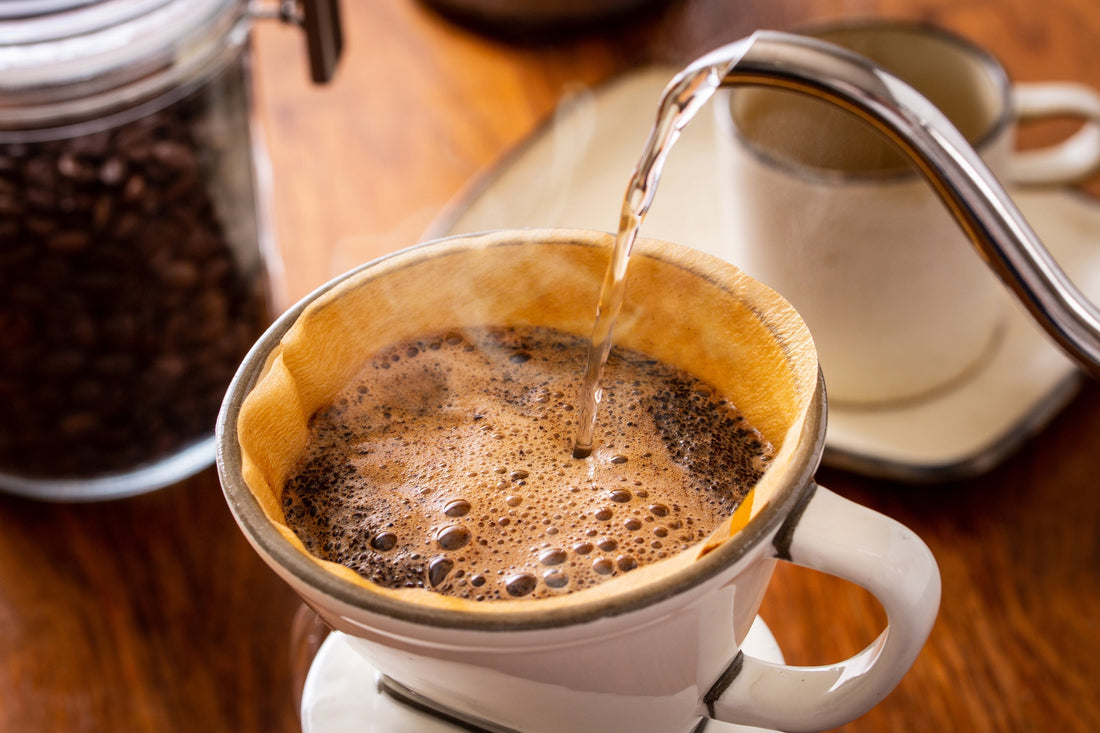Reading material
Water temperature and coffee taste

One of the factors that greatly influences the flavor of coffee is the temperature of the water. Even if you're particular about the type of beans, the degree of roasting, and the extraction method, if you don't control the temperature properly, you won't be able to bring out the coffee's natural aroma and flavor. The temperature of the water is directly linked to how the ingredients in the coffee dissolve, and its influence is very subtle and profound. In this article, we'll take a closer look at how the temperature of the water affects the flavor, and offer some tips to make your coffee time at home even more enjoyable.
Changes in taste caused by temperature
The taste of coffee changes dramatically depending on the temperature of the water. The commonly used temperature range is around 85℃ to 96℃, and the balance of flavor changes significantly within this range.
As you can see, the temperature of the water directly affects the type and amount of ingredients extracted. Different temperatures bring out different flavors, so adjusting the temperature to suit your taste will bring you closer to your ideal cup of coffee.
How to choose the right temperature: depending on the beans and roast level

The optimal water temperature varies depending on the type of coffee beans and the roasting level. Lightly roasted beans are relatively delicate, so if you want to bring out their acidity and fruitiness, a slightly lower temperature is appropriate. On the other hand, darkly roasted beans are characterized by their fragrant and rich flavor, so a higher temperature is best for thorough extraction.
Roast level guidelines
In order to bring out the individuality of the beans, it is important to carefully extract them at a temperature that suits their characteristics . It is also an interesting method to try the water temperature several times and experience the difference in taste, rather than getting too hung up on the same temperature once you have decided on it.
Temperature changes due to equipment and countermeasures

Even if you prepare hot water at the right temperature, if the brewing equipment is cold, the temperature will drop the moment you pour it. This is especially true in winter, and glass drippers tend to easily lose heat from the hot water.
Therefore, it is very effective to warm the equipment with hot water beforehand to stabilize the taste . Also, it is important to be aware of the cooling at the spout of the pot, and start pouring when the water temperature is a few degrees higher than the desired temperature.
With a little ingenuity, you can extract coffee at a sufficiently stable temperature using household equipment.
Recommendations for management using a thermometer

To reproduce the same taste every time, it is important to minimize fluctuations in the water temperature. This is where a thermometer comes in handy. Recently, there are many kettles on the market that have a temperature display on the spout, and electric kettles that can be heated to a set temperature.
Even if you don't have a thermometer handy, waiting 30 to 60 seconds after boiling will usually bring the temperature to around 90°C, but it's still convenient to have a special tool to control the temperature accurately . This is especially recommended for those who want to fine-tune the flavor.
Tips for brewing hot coffee and the ideal drinking temperature
The optimum temperature for brewing hot coffee is around 90 to 94 degrees Celsius. If the water is too hot, the coffee will taste bitter and astringent, and if it is too lukewarm, the coffee will not be able to fully bring out the aroma and flavor.
Also, coffee immediately after brewing is hot, making it difficult to detect the subtle nuances of flavor. The ideal drinking temperature is around 60-65°C . At this temperature, you can taste the acidity, sweetness, and aroma in a balanced way. Drinking it after it has cooled a little can reveal unexpected flavors, and enjoying the change in flavor over time is one of the joys of coffee.
Iced coffee extraction and temperature
The temperature of the water is also important when making iced coffee. If you are rapidly cooling it with ice, you can make it stronger by extracting it at a higher temperature (93℃-96℃) to compensate for the dilution caused by the ice.
Pouring it over ice immediately after extraction and quickly cooling it locks in the aroma, resulting in coffee with a refreshing aftertaste. If you're enjoying it as iced coffee, the most comfortable temperature range is around 5-10°C . Even if you chill it in the refrigerator, letting it cool slowly over time will allow the flavors to blend together, resulting in a more unified finish.
Cold brew coffee is another cooling method that doesn't use ice, but it's a different extraction method and isn't affected by the water temperature. However, just like hot coffee, the change in taste depending on the temperature can be an enjoyable experience with iced coffee.
summary
The temperature of the water is one of the factors that greatly influences the taste of coffee. Different temperatures bring out different components and flavors, so adjusting the temperature to suit your preferences and the characteristics of the beans will lead to a richer flavor.
Temperature control is not a professional technique, but something that anyone can practice . By brewing your daily cup of coffee with a little more care, you will be able to appreciate the richness of coffee. Whether it's hot or iced, using temperature to your advantage will make coffee more enjoyable and delicious.